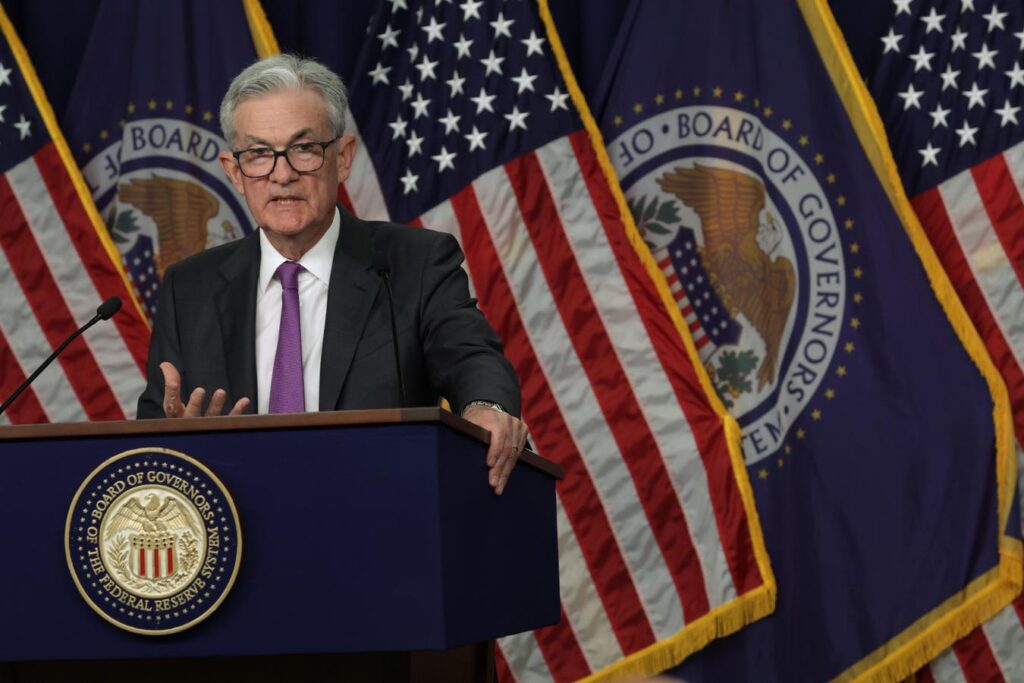WASHINGTON, DC – JULY 26: Federal Reserve Board Chairman Jerome Powell speaks during a news … More
April’s Consumer Price Index inflation report, scheduled for release on May 13, should may another relatively muted inflation reading according to nowcasts. That may support an interest rate cut in June. However, tariffs remain a wildcard.
Nowcast Forecasts For Inflation
Nowcasts project broadly 0.2% monthly inflation for the month of April, according to the models of the Cleveland Federal Reserve. That forecast is broadly consistent for both headline and core and for the CPI and Personal Consumption Expenditure inflation readings. It translates to annualized inflation of approximately 2.5% or a little above the Federal Open Market Committee’s 2% annual inflation target.
Historic Inflation Metrics
Historically for the 12 months to March 2025, the Atlanta Fed’s Inflation Dashboard, which tracks 9 ways to compute underlying inflation, has all inflation metrics running above the FOMC’s goal of 2%, with a range of 2.2% to 4.0%.
However, on a positive note, all inflation metrics have seen meaningful disinflation compared to March 2024. Broadly, inflation has cooled overall over the past 12 months, but still remains above the FOMC’s target.
Shelter Cost Disinflation May Pull Inflation Lower
A key factor within April’s CPI report will be shelter costs. This carries a high weight in the overall CPI inflation calculation. For the 12 months to March 2025, shelter cost inflation cooled to a 4% annual rate.
Economists have anticipated shelter cost disinflation for some time in part as private market indices have signaled moderating home prices. If the general trend in cooling shelter cost inflation continues from early 2025 into April that may help pull inflation lower. That’s because shelter costs, as a large expenditure category for consumers, make up just over a third of the CPI index. Statistically, the shelter component is also computed as a moving average of different input data, so that’s a further reason why shelter cost disinflation could persist in 2025.
Gauging Tariff’s Impact On Inflation
Both the market and the FOMC will be watching closely for any inflationary impact from tariffs. April may be too early to fully gauge this because April only partially captures the implementation of certain tariffs and supply chain and inventory lags mean that consumer prices may take additional weeks before any tariff impact occurs.
Nonetheless, inflation in goods prices will be closely monitored. Any step-up in goods inflation would likely concern both markets and the FOMC. However, cooling home prices, should that trend continue, may have the potential to somewhat offset any potential inflationary trends from tariffs. Still it may take more months of CPI reports before any impact of tariffs on pricing can be fully assessed.
Upcoming Interest Rate Decisions
The FOMC has made clear that they watch the overall trends in economic data rather than reacting to individual monthly report. In the context of a healthy jobs market, policymakers have been looking for more evidence that inflation is cooling before considering cutting interest rates.
April’s data may offer some degree of comfort on cooling inflation because inflation has been subdued for the first three months of 2025 and that could continue. Nonetheless, how the FOMC will handle the economic impact of tariffs remains unclear and officials have indicated they are waiting for further hard data rather than acting on projections.
The CPI inflation report for April will come the week after the FOMC meets on May 7, at that May meeting, the markets expect interest rates will be held steady. However, fixed income markets estimate the next interest rate cut will likely come in June. April’s CPI reading might offer some support for that.


